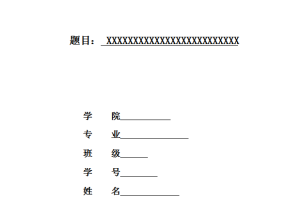英汉习语的文化差异及其翻译
中文摘要
同一句话,不同的文化背景的人反应有时是不同的,甚至会截然相反。究其原因是说话双方没有真正了解对方的文化。因此,完全有必要对中西文化差异进行研究。习语是各国文化的精髓,反映各国的风俗习惯。它作为语言的精华承载着丰富的文化信息,充分反映出英汉两种语言的文化差异。因此,本文从最能体现中西文化差异的习语着手,论述习语在文化上六个方面中所反映的中西文化差异,即生存环境、生活习俗、宗教信仰、历史典故、对客观事物的认识、数字习语的差异。从总体上看,英汉习语在表现语义和文化特征方面,主要有三种类型,即对应关系、半对应关系和不对应关系。在翻译时,对应关系的习语可采用直译的方法。半对应关系和不对应关系的习语应该首先弄清它们的文化内涵和实际意义,再根据上下文的意思灵活处理。因此,英汉习语的翻译不应只是两种语言的简单转换,更应是文化的交流。掌握习语的翻译,对于培养语言的领悟力和跨文化的交际能力是十分必要的。
关键词:习语;文化差异;翻译
Abstract
Different people from different cultures may have different understandings of the same sentence because they are ignorant of target cultures. It is necessary for us to study the cultural differences in some fields between China and Western countries. Idioms, which reflect customs, are the essence of culture in every country. Idiomatic phrases, the essence of languages, are loaded with rich cultural information and serve as a mirror of cultural differences between Chinese and English. Therefore, in this paper, the author will discuss the idioms reflecting the differences of Chinese and English in six levels: living environment, custom, religion, allusion, the acknowledge of objective thing. When expressing linguistic meanings and cultural features, there are mainly three types of idioms: correspondent, semi-correspondent and non-correspondent. For the correspondent idioms, we can translate them word for word into the target language .But for the semi-correspondent and non-correspondent idioms, it’s better to make sure first of their cultural connotations and practical meanings, and then translate them appropriately according to the context. Therefore, translation of idiomatic phrases is more cultural communication than simple translation of these two languages. The mastery of the technique for translating idiomatic phrases is a must to the cultivation of linguistic comprehension and intercultural competence.
Key words: idioms; cultural differences; translation
目录:
一、英汉习语的文化差异
二、习语的翻译方法
三、结语





